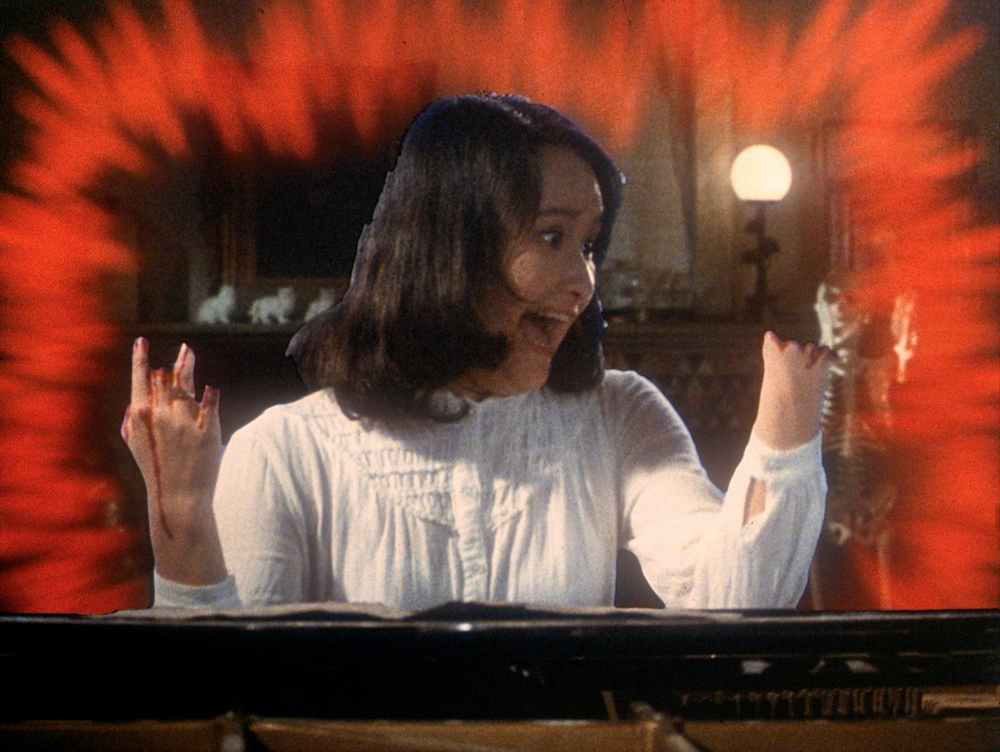Table Of Content

Dark paneled walls and warm brick fireplace wall create an inviting background for traditional furnishings updated with lively plaids and prints. By design, this spacious one-level house opens graciously from a center hall that links two carefully planned rectangular living areas. Even after the flesh perishes, one can live in the hearts of others together with the feelings one has for them.
House (1977) Streaming: Watch & Stream Online via HBO Max - Yahoo Entertainment
House ( Streaming: Watch & Stream Online via HBO Max.
Posted: Fri, 22 Dec 2023 08:00:00 GMT [source]
This 1977 time capsule house may spark a new love affair with 1970s interior design — 37 photos
In “Constructing a House,” Obayashi mentions that the actresses “belonged to a younger generation that found it easier to express emotion through chords, melodies, and rhythms than through words. Nobuhiko Obayashi’s House was released in Japan in 1977 to a highly polarized reaction. To the lifelong devotee of classical Japanese cinema, it was indeed sacrilegious, a mutant child born of American genre bombast, anime-style hyperkinesis, and manic psychedelia. Despite the protestations of the old guard, though, the movie was a hit, and in the ensuing decades, Obayashi’s esteem has only grown. There is, however, something underpinning all the madness, a quietly melancholic undercurrent that ultimately elevates the film.
A 1970s designer dream house: The American Home of 1974

The most expensive trial in the history of the California legal system at that time followed, with Bianchi and Buono eventually being found guilty of those crimes and sentenced to life imprisonment. The kitchen itself — designed around and island cooktop, with two wall ovens only one step away — is master-planned from top to bottom, with acoustical ceiling tile, diffused lighting from two recessed panels and vinyl flooring. Plants beckon at every turn, for our inviting entry is at the very heart of the house. Immediately accessible (seen from left, above) are dining, family and living rooms.
Obayashi Nobuhiko's House - Film - Artforum
Obayashi Nobuhiko's House - Film.
Posted: Mon, 25 Sep 2023 01:57:58 GMT [source]
Film adaptations

The encounter is initially disregarded by the other girls, but over time they also begin to encounter other supernatural traps throughout the house. Toho Studios approached Obayashi with the suggestion to make a film like Jaws. Influenced by ideas from his daughter Chigumi, he developed ideas for a script by Chiho Katsura. After the project was green-lit, it was put on hold for two years as no one at Toho wanted to direct it. However, Obayashi kept promoting the film until the studio allowed him to direct it himself. House was filmed on one of Toho’s largest sets, where Obayashi shot the film without a storyboard over a period of about two months.
House (1977 film)
It isn’t until the final two survivors find and read Auntie’s diary that they recognize not only the tremendous loss and betrayal that the war left in its wake, but how the shadow of that loss has deformed into the specters and nightmares that now assail them. Their only hope as they float upon an ocean of blood, out of options and no exit in sight, is that Mr. Togo might finally arrive at the house just in time to save them. This lilting music-box melody is the prime transformative catalyst not only for Gorgeous, but for actress Kimiko Ikegami. Without the benefit of seeing the visual effects that accompany her possession, Ikegami has only the leitmotif to inform her new thousand-yard stare, the flat affect that crawls into her voice, her slow shuffle down the stairs and to the telephone.
Who’s Singin’ Over There?: Roma music and survival in Yugoslav cinema
Although the undercurrent of incredible sadness that surges through House ages us just a bit, Obayashi still sends us out on one final swell of fantasy, forgiving us our naïve need to believe in beauty even as it walks hand in hand with his damning excoriation of humanity. There’s joy amidst fear, and there will be loss in our future, and from the cinematic overlap of these truths emerges Obayashi’s “story of love.” Like a leitmotif, no matter what form it takes, we all eventually hear the same melody. Although Obayashi is quick to textualize his observations about the differences in perception between younger and older Japanese moviegoers—“it’s like a cotton candy! ” one of the girls coos early in the film at footage of an atomic detonation—his intentions in doing so aren’t initially clear. Are the girls simply callous, or is 32 years of distance from unprecedented horror enough to justify their lighthearted attitudes?
See a ’70s model home: A pretty, practical, family-friendly house
The piano swallows Melody whole, and her remaining disembodied fingers plunk out a final few bars of the leitmotif before hitting a sour note and being crushed under the piano lid. If Obayashi’s “younger generation” is as musically inclined as he claims, the message must be as unequivocal to them as it is to us, especially when communicated through melodies crafted by their own cohort. This is one of the many elements that makes Gorgeous’ possession so powerful. At the midpoint of the film, she enters Auntie’s room and sits at a vanity adorned with tokens of youthful beauty—makeup, fancy hairpieces, a photo of a lover long since passed.
Obayashi’s darkly comic fable tells the story of seven schoolgirls, each of them named for their defining attribute, à la Snow White and the Seven Dwarfs (1937). The pretty but pensive Gorgeous is joined by Prof (brainy), Kung Fu (violent), Fantasy (a daydreamer), Sweet (homely), Melody (musical) and the ever-eating Mac (short for ‘stomach’) on a summer trip to her aunt’s creaky old house in the countryside. The sumptuous master bedroom (above) in the American Home of 1974 has serenely Oriental touches. Many thanks to Annie of Annie M Designs — not only did she photograph the home, but also she recommended the homeowners contact us for this story. In the spacious master bedroom, ripe peach is the luscious color that envelopes the setting. Behind seating area sliding glass doors that open to patio provide a sunny daytime view.
Upstairs in the house, Kung Fu and Prof find Gorgeous wearing a bridal gown, who then reveals her aunt's diary to them. Kung Fu follows Gorgeous as she leaves the room, only to find Sweet's body trapped in a grandfather clock, which starts bleeding profusely. Panic-driven, the remaining girls barricade the upper part of the house while Prof, Fantasy and Kung Fu read the aunt's diary. After a tour of the home, the girls leave the watermelon in a well to keep it cold. When Fantasy goes to retrieve the watermelon from the well, she finds Mac's disembodied head, which flies in the air and bites Fantasy's buttocks before she escapes.
The “love” that keeps Auntie infinitely suspended in the house, and the youth and beauty foregone as she sat waiting for that love, are illusions. The adventurous horizons and unblemished romance promised to a post-war generation, on which she feeds to sustain her bitter unlife, are illusions. What Obayashi allows us to do through the soundtrack is cope with the eternal war between these opposed illusions, our fears and our futures, by reconciling them rather than turning away from them completely.
You stand on cool, dark ceramic tile that has the sleek look of polished leather. Denver homemakers wanted both elegance and practicality, which guided our choices of materials. Surfaces are hardy; upholstery fabrics, special-treated for stain resistance; wallpapers, wipeable. Using every area of the house to its fullest, outside and in, was one requirement of the Women’s Auxiliary. Plaid and flowered sheets are used in girl’s room — on walls and laminated window shade, and also on bed. The wall unit has storage space as well as a drop-down desk for correspondence and family bookkeeping.
One would be going to the bathroom or wanting to get ready alone, while the other one needed to get in. If you read this blog post on the first exterior ideas, you read where I really wanted to add a window to the upper floor in-between the two bedrooms, but it didn’t work with the current plans. So we went back to the drawing board and came up with this idea for the floor plan….. Walls of Masonite (dark) and vinyl-coated wallpaper (pale) — and flooring of cork-effect cushioned vinyl — are enduring assets, as is scratch-resistant “Denim” vinyl on chest fronts.
Although all of House’s music is evocative, its leitmotif is the Rosetta Stone to understanding its complex attitude toward romance, youth, and the specter of post-war Japan that looms over them. It’s initially used as a malleable, expressionistic representation of how the girls are feeling at any point in time, often warm and jovial with a strongly nostalgic character. At the halfway point, however, the leitmotif enters the film’s diegesis in the form of a music box, changing from an emotional signpost into an icon of wartime grief. Its appearance signals a turn in both the girls’ understanding of their dire circumstances and the viewer’s understanding of how House uses music to create a false sense of comfort. Through Godiego’s young hands, Obayashi inspires feelings of romantic warmth and hope as we get to know the girls, only to cast doubt on the meaning and validity of those feelings once the horrors of Auntie’s house obliterate their youthful illusions. One wing comprises living room, master bedroom and bath, study/guest room; the other houses all the daytime living spaces plus two children’s bedrooms.

No comments:
Post a Comment